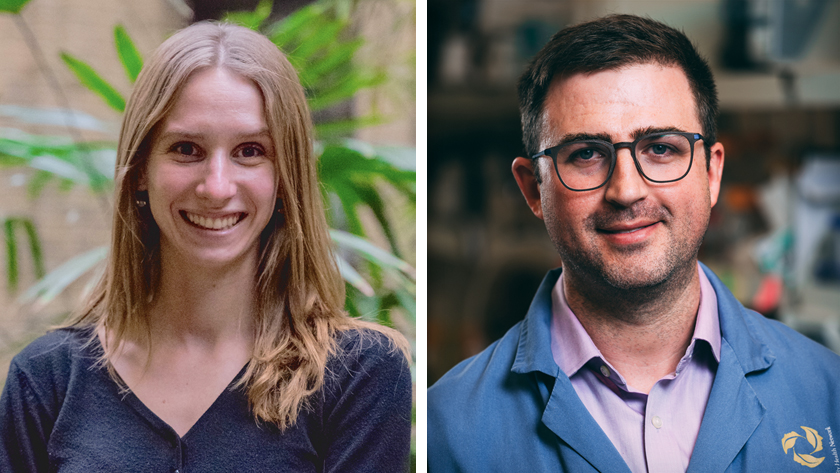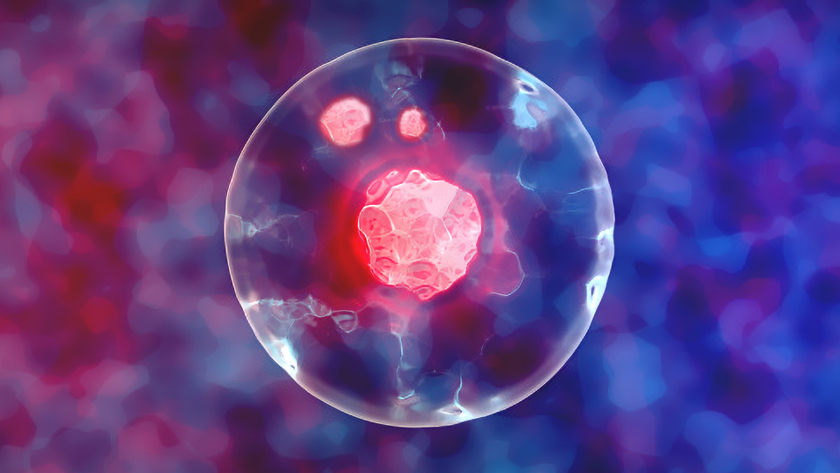
New research led by Dr. Shane Harding at the Princess Margaret Cancer Centre (PM) sheds light on the role of micronuclei in response to DNA damage. The work was conducted in collaboration with Senior Scientist Dr. Cheryl Arrowsmith at PM.
Micronuclei are small structures in the cell that contain fragments of genetic material. These structures are prone to rupturing spontaneously and usually form in cells, such as cancer cells, which have experienced stress or DNA damage. They are found in addition to a cell’s main nucleus, which contains most of the cell’s genetic material.
Micronuclei are known to play a role in inflammation following DNA damage, which both speeds up cancer development and determines the effectiveness of cancer treatments. When micronuclei rupture, they are recognized by a protein called cGAS that binds to them and initiates an inflammatory response.
“Not all ruptured micronuclei recruit cGAS,” says Kate MacDonald, a PhD student in Dr. Harding’s lab and first author of the study. “We think that there are a set of micronuclei characteristics—which remain poorly understood—that can lead to cGAS recruitment and inflammation."
To understand these features, the team looked at how different types of stress and DNA damage-inducing treatments affect the ability of the micronuclei to attract and activate cGAS.
They found that whether or not cGAS can recognize and respond to ruptured micronuclei depends on what caused the DNA damage that led to the micronuclei in the first place.
They also found that certain features of the genetic material within a micronucleus, such as chemical modifications to DNA packaging proteins and active gene expression, can affect whether cGAS is attracted to the micronucleus and how much inflammatory signaling is triggered as a result.
“This work has important implications for how the genetic material is arranged in the cell before and after exposure to cancer treatments that damage DNA. We also think micronuclei features may determine how cancers develop in the first place.” says Dr. Harding. “Understanding these molecular processes could lead to new ways to harness the impacts of micronuclei on cellular biology—and could ultimately lead to better cancer treatments with less side effects.”
This work was supported by the Canadian Institutes of Health Research, the Natural Sciences and Engineering Research Council of Canada, the JP Bickell Foundation, the Province of Ontario, the University of Toronto, the Structural Genomics Consortium and The Princess Margaret Cancer Foundation. Dr. Shane Harding is an Assistant Professor in the Department of Medical Biophysics at the University of Toronto.
MacDonald KM, Nicholson-Puthenveedu S, Tageldein MM, Khasnis S, Arrowsmith CH, Harding SM. Antecedent chromatin organization determines cGAS recruitment to ruptured micronuclei. Nat Commun. 2023 Feb 2;14(1):556. doi: 10.1038/s41467-023-36195-8.

Micronuclei (illustrated above as two small pink spheres) are tiny enclosed structures that contain genetic material, which are separate from the cell’s main nucleus (large pink sphere). They form when DNA fragments are not properly divided between cells during cell division and are usually caused by DNA-damaging agents.




